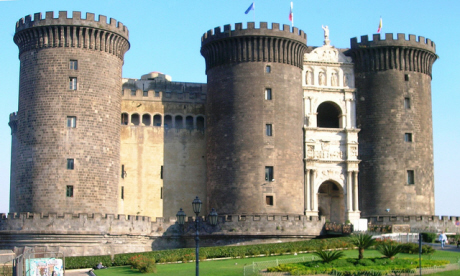
Busy Naples is fantastic and frustrating in equal measures, says William Gray, and should be on your hit-list of cities to see
How does the saying go? ‘When in Rome, do as the Romans do.’ Well, here’s another one: ‘When in Naples, don’t drive.’
With hindsight, it was pure masochism to take a car into Italy’s third-largest city. Everyone had told me I was mad and now, lambasted by blaring horns and twitching at the mere sight of a moped, I was completely lost.
Across the Bay of Naples, Mount Vesuvius sulked in the heat haze as I fumed my way through a spaghetti-maze of one-way streets and suicidal piazzas. Bolting for the nearest underground car park I emerged chanting a mantra that should be foremost in the minds of every Naples tourist: “Two legs good, four wheels (and mopeds) bad.”
On foot, Naples is still chaotic, but in an engaging, less stressful way. The pavements are just as congested as the roads (and some moped drivers fail to distinguish between the two). However, this city of 1.25 million contains numerous tranquil sanctuaries, from the cavernous nave of the Duomo to the echoing halls of the Museo Archeologico Nazionale.
It is a place of extreme contrasts, where historical gems dating back to ancient Greek times have to be sieved from the shambolic clutter of a modern, overcrowded city. Naples is filthy yet refined; awesome yet awful. It has an extraordinary ability to delight and dismay.
Take Santa Chiara, for example. Consecrated in 1310, this Gothic and Baroque-style church harbours an idyllic oasis – a garden-framed cloister sprouting 72 pillars and numerous benches, each meticulously finished in beautiful, hand-painted tiles. After strolling among such lavish artistry, the graffiti around the church’s exterior struck me as all the more crude and ugly.
Undeterred, I launched myself from Santa Chiara into the human torrent that courses through Spaccanapoli. As well as threading a tourist lifeline between numerous churches, statues and historic buildings, this narrow canyon-like street is one of the most vibrant parts of Naples. Street vendors crowd the cobbles, selling everything from sunglasses to incense. There are shops crammed with pasta and traditional clay nativity scenes. Cafés overflow with locals sipping Neapolitan coffee, while open-air restaurants serve delicious pizza Margherita.
Spaccanapoli was about as far as I got on my first day, footloose and bewildered, in Naples. The following morning I headed for Via Toledo, another shopper’s Mecca and a useful artery into the heart of the old city centre. Side streets cleaved the closely packed buildings on the slopes leading to the district of Vomero. The washing strung between them was as thick as carnival bunting, but there were occasional gaps where I caught glimpses of the spectacular 14th century hilltop monastery of Certosa di San Martino.
At the southern end of Via Toledo, Naples’ heritage reaches a crescendo. Looming above the ferry port, Castel Nuovo (a magnificent 13th century fortress) is barely an arrow’s flight from the Palazzo Reale. Dating from around 1600, this elegant building was once one of the Mediterranean’s most important royal courts and now houses a valuable library. Its façade is adorned with statues of Neapolitan kings gazing across the paved expanse of Piazza del Plebiscito towards the equally striking neoclassical church of San Francesco di Paola.
This productive lode of historical nuggets is best enjoyed, I discovered, with a break (or breaks) at the nearby Caffè Gambrinus, to sample its renowned selection of pastries and ice creams. Strictly speaking, this was not a dereliction of sightseeing duty. The elaborately decorated café is rich in history as well as calories; once popular with Oscar Wilde, it was a well-known literary haunt.
Perhaps the ultimate feast for culture vultures in Naples, however, is the Museo Archeologico Nazionale, which houses one of the world’s most outstanding archaeological collections. Wandering through its labyrinthine interior, I came face to face with Hercules and other famous statues from the Farnese Collection. Many relics from Pompeii and Herculaneum have also found sanctuary here. Among them are some wonderfully intricate mosaics, including one depicting the Battle of Issus between Alexander the Great and Darius, Emperor of Persia. There is also a fascinating scale model of the Pompeii excavations – inspiration, no doubt, for one of Naples’ most popular excursions.
If only I could remember where I parked my car.